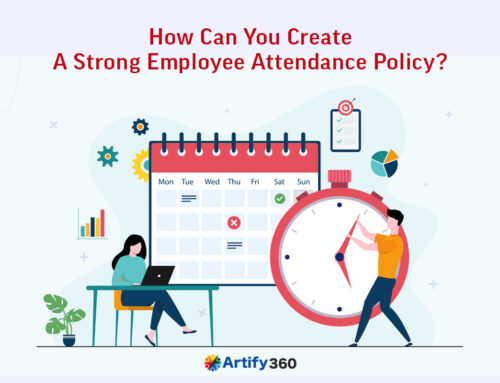In today’s fast growing business landscape, organizations in Saudi strive for continuous improvement to enhance performance and maintain a competitive edge. One often overlooked source of valuable insights is exit interviews with departing employees. Organizations can gather crucial feedback and leverage offboarding data to drive continuous improvement initiatives by engaging in meaningful conversations with those leaving.
In this article, we will explore the significance of Saudi HR software in exit interviews, methods for collecting offboarding data, key areas of inquiry, analyzing and extracting insights, and implementing improvements based on these valuable findings.
The significance of exit interviews
Exit interviews serve a dual purpose: understanding why employees leave and gathering insights to improve the organization. By conducting exit interviews, organizations can identify patterns and trends, assess employee satisfaction, pinpoint areas for improvement, and enhance their retention strategies. Additionally, exit interviews provide departing employees a platform to share their experiences, contributing to a positive offboarding process.
Exit interviews offer a unique opportunity to obtain data that may not be readily available through other means. They provide organizations with insights into the reasons behind employee departures, including dissatisfaction with the work environment, challenges with management, or limited career development opportunities. By collecting this valuable data, organizations can comprehensively understand their strengths and weaknesses, enabling them to make informed decisions to drive positive change.
Key areas of inquiry
Identifying key areas for focus
During exit interviews, organizations should focus on key areas directly impacting employee satisfaction and retention. These areas include the reasons for leaving, the work environment, management effectiveness, and career development opportunities. By exploring these topics, organizations gain valuable insights into their organizational strengths and areas for improvement.
Crafting meaningful questions
Crafting meaningful questions is essential to extracting insightful feedback from departing employees. Examples of meaningful questions include:
- What were the primary factors that influenced your decision to leave?
- How would you rate your overall experience with the work environment and company culture?
- Did you feel adequately supported by your immediate supervisor and the management team?
- Were any specific challenges or obstacles hindering your professional growth and development?
- Do you have any suggestions for improving the organization’s practices, policies or tech such as Saudi HR software?
By asking targeted questions, organizations can gather specific feedback that helps them identify areas for improvement and drive positive change.
Analyzing and extracting insights
Importance of analyzing exit interview data
Once exit interviews are conducted, it is crucial to analyze the collected data by HR software in Saudi to identify patterns, trends, and potential areas for improvement. Analyzing exit interview data helps organizations better understand employee experiences, challenges, and concerns. It allows them to uncover underlying issues and make data-driven decisions to enhance organizational performance.
Techniques for data analysis
Organizations can use Saudi’s top HR software to extract meaningful insights from exit interview data. Qualitative analysis involves categorizing responses and identifying common themes. Quantitative analysis involves aggregating numerical data, such as rating scales or multiple-choice questions, to identify trends. Data visualization tools, such as charts or graphs, can visually represent the findings, making it easier to interpret and communicate the insights to stakeholders.
Identifying areas for improvement
Leveraging insights for organizational growth
Exit interview insights provide organizations with a roadmap for improvement. Organizations can make targeted changes to address underlying problems by identifying recurring themes or issues. For example, if multiple employees express dissatisfaction with communication practices, the organization can implement strategies such as employee self service with HR software in Saudi to enhance transparency and foster effective communication.
Addressing identified issues
Implementing improvements based on exit interview findings is vital to enhancing employee satisfaction and retention. Organizations should prioritize addressing the identified issues promptly. This may involve revising policies, providing additional training, or fostering a culture of open communication. Organizations can retain valuable talent and foster a positive work environment by demonstrating a commitment to continuous improvement.
Creating action plans and accountability
Organizations should create action plans that outline specific steps, responsible parties, and timelines to ensure the effective implementation of improvements. Assigning accountability to relevant stakeholders helps maintain momentum and ensures positive changes are integrated into the organization’s practices. Regular follow-up and evaluation of the implemented improvements are essential to gauge their effectiveness and make further adjustments if necessary.
Final thoughts
Exit interviews provide organizations with a powerful tool for continuous improvement. By conducting meaningful exit interviews, collecting offboarding data, and analyzing the insights gained, organizations can identify areas for improvement, enhance employee satisfaction, and drive positive change. Implementing Artify360 HR software simplifies the exit interview process in your organization.
The data obtained through exit interviews serve as a roadmap for organizational growth, allowing organizations to address challenges, foster a positive work environment, and retain valuable talent. By leveraging Artify360 for exit interviews and implementing improvements based on the gathered insights, organizations can create a culture of continuous improvement, positioning themselves for long-term success in today’s dynamic business landscape.






